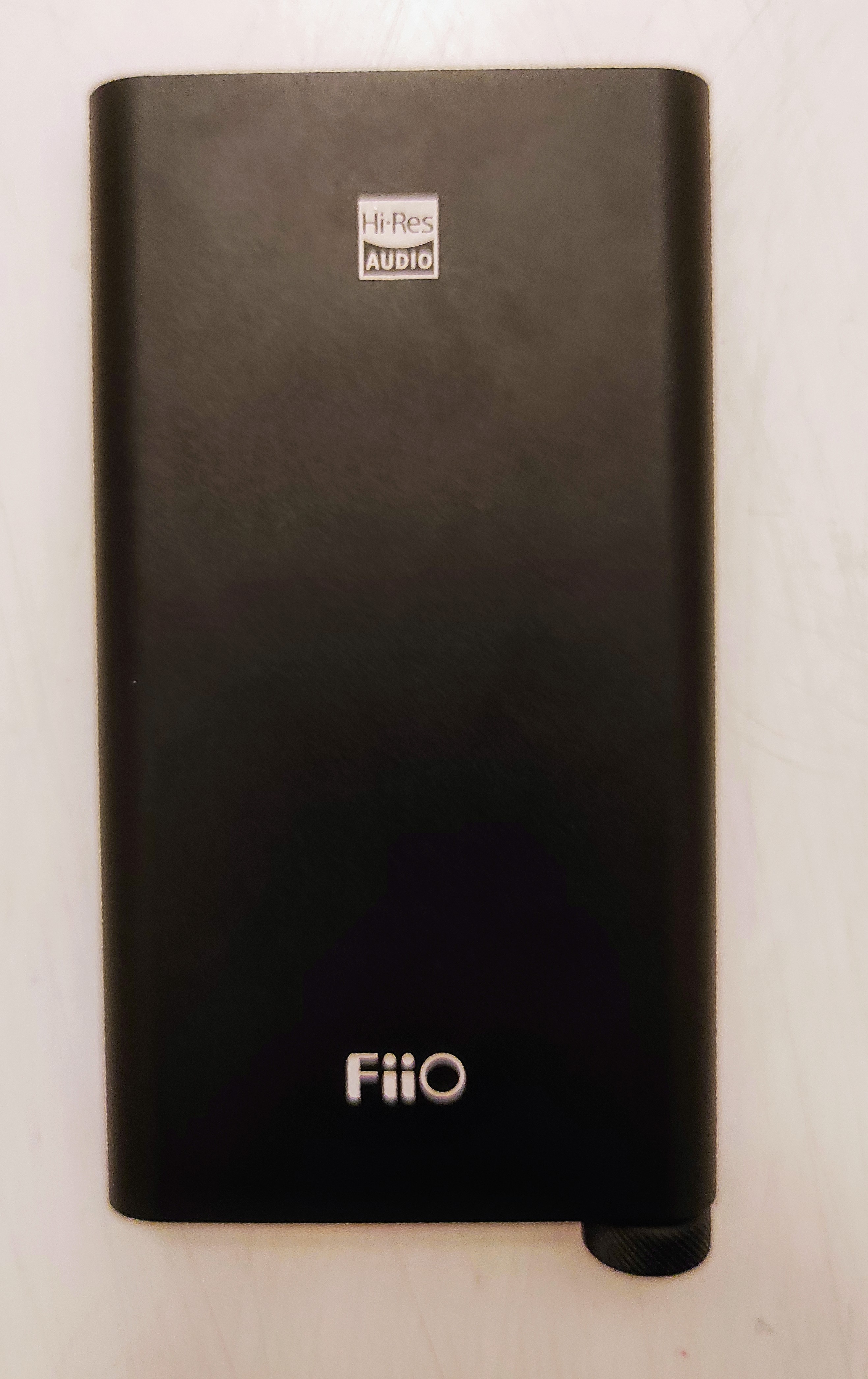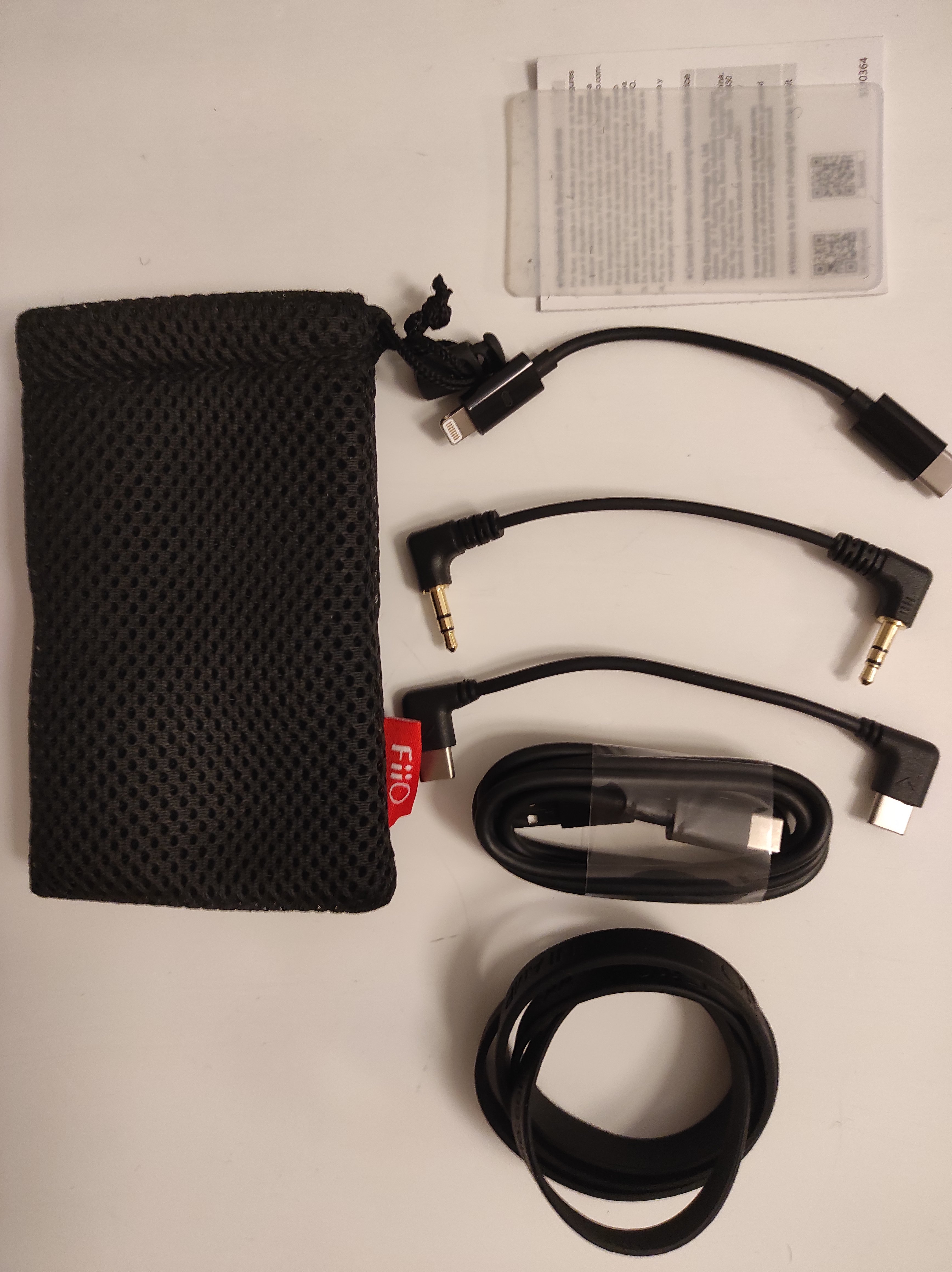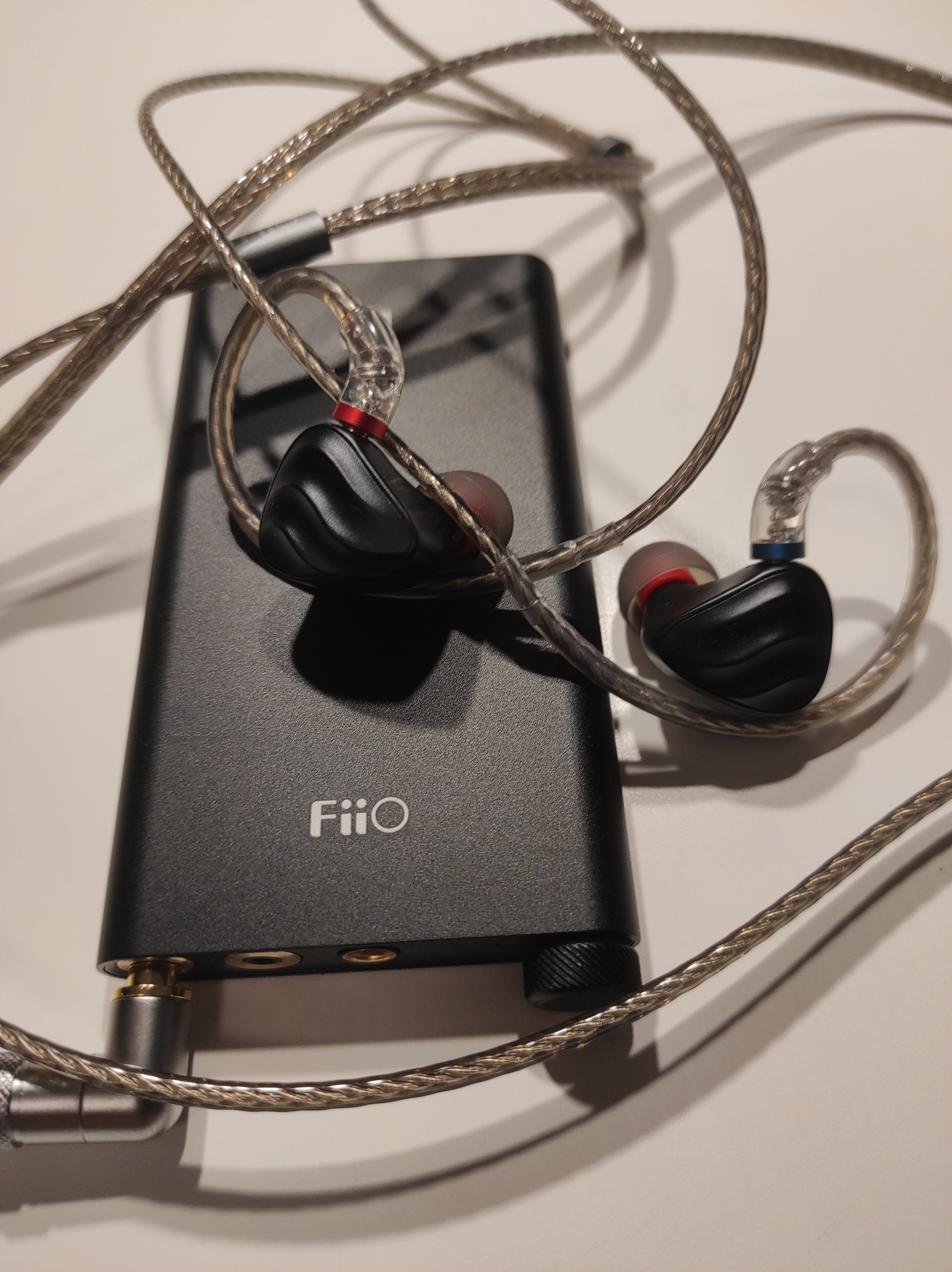Preface
The Q3 was kindly provided by FiiO and is still under their ownership.
This is my honest and subjective evaluation of it.
Q3 is the latest battery powered portable dac/amp offering from FiiO.
It seats just above the entry level Q1 mkii and before the flagship Q5S retailing at about 150$/160€.
You can get it from
FiiO.eu
Physical and layout
The resemblance to the Q1 mkii is obvious as are the dimensions with the Q3 measuring 105x59x12.5mm with a weight of 110g.
Sandblasted aluminum is used throughout with built quality and finish being top notch as is the design with the rounded curves and minimal lines making for a beautiful little device that fits securely inside our palm.
FiiO has cleverly added inside the Q3 an extra nickel - copper shield plus highly efficient radio frequency absorbers to completely shield the unit from electromagnetic interference.
The Q3 is equipped with 4.4mm/2.5mm balanced outputs plus a single ended 3.5mm one for easy connection with all kinds of portable headphones and iems without the need of extra adapters.
One of the best features of FiiO's Q line is the use of an analogue potentiometer volume knob that is very much to our liking.
It acts also as the on/off switch and it is combined with ADC curve reconstruction to help improve with low volume channel imbalance.
An RGB indicator next to the volume knob informs us about the sampling rate with three different colours plus whether the battery is charging or it is low and needs to be recharged.
Unfortunately battery level indication is not supported.
At the other end of the device there is the data/charging usb type C port plus three extra buttons.
The one is the bass boost switch that is hardware based and offers a +6dB level increase.
The next one is a multifunction button that when it is short pressed switches between low and high gain and when it is double taped cycles between sharp and slow roll off filters.
A green light goes on for high gain but there is no visible indication to distinguish between the two filters.
Last but not least there is the long awaited and missing from the Q1 mkii charge on/off switch that is very helpful when we do not want the Q3 to drain the battery of the connected device it's being connected to.
A 1800mAh battery supporting quick charge is used to sufficiently power the Q3.
Technical characteristics
Internally the Q3 is completely renovated with all components and circuit arrangement being brand new.
The dac chip used is AKM's new efficient AK4462 with decoding support up to 768kHz/32bit PCM and DSD512.
The dac is used in balanced mode providing symmetrical signal to the low pass filter and then it is amplified by two THX AAA 28 op amps for low distortion and high power balanced output.
The usb receiver is XMOS XUF208 the same used at the flagship Q5S supported by dual crystal oscillators.
The rated power output of the Q3 is higher than the Q1 mkii with 160mW/32Ω and 300mW/32Ω from the balanced out.
The Q3 can act as a line in amplifier with a short gimmick because it's line in port is shared with the 3.5mm headphone out so in that mode we can only use the balanced outputs to listen to music.
The Q3 in contrast to the Q1 mkii does not feature a dedicated line out that bypasses the amplification stage.
The Q3 is fully compatible with iOS and Android devices plus windows PC and it can also be used with Sony walkman players with an adapter cable that is sold separately.
Accessories
As we are now accustomed with FiiO we get an extra large accessory pack.
Included in the box are a dual usb type C head cable , long usb type C data cable , short lighting to usb type C cable , 3.5mm line cable , long and short binding straps*2 , non slip protective mat and a storage bag.
Testing
We have connected the Q3 with various Android devices and a laptop without any apparent issues and we didn't experience any serious electromagnetic interference except one - two times.
In order to test sound quality and driving power plus noise floor we have used various headphones and iems like Sennheiser HD660S , Hifiman Sundara and FiiO FH3 among others.
Noise floor is low enough to be used with normal sensitivity iems and power while it is not lacking isn't sufficient enough for power hungry headphones.
The Q3 from the balanced only output can drive low Z / normal sensitivity headphones plus some higher Z that are efficient enough.
As a real life example we have listened to low level recorded classical music with our Sennheiser HD660S loud enough and without clipping with the volume knob set at about 80% of it's available rotation.
Battery duration is about eight hours with high resolution material running headphones from the balanced out at louder volume levels.
Sound impressions
Overall sound profile is natural and pleasant with an even tonal balance and good extension just rolling off at the extremities of both ends.
Truth to be told one must pay extra attention to notice and let's not forget that the Q3 isn't targeted for critical listening.
So in most cases while on the go or at the office even relaxing at home we have listened to a lot of music of various genres without missing a lot.
The Q3 is full bodied reaching low enough with good impact and layering while offering adequate levels of resolution and detail without compromising a lot.
Midrange is very engaging and higher frequencies are portrayed with a softer tone without rough edges.
The new THX AAA is a marvel helping a lot with great dynamics and fast transient response.
It is very clear and can portray a naturally structured and spacious stage that can do justice to most headphones and iems used.
The single ended output of the Q3 is good enough but rather underpowered and in order to unlock the full potential of it we must use the balanced output.
Not only it offers greater headroom but it also takes advantage of the fully balanced circuit that sounds better with greater technical performance.
Bass boost and filters
The hardware based bass boost is well implemented offering about +6dB of amplification without clouding very much the mid bass or overlapping the other frequencies.
Nice to have for bass lovers or to help lower quality mp3 or YouTube material sound better.
Regarding the two filter settings they mostly affect higher frequencies with the one sounding more firm and well defined and the other more rounded and soft.
Differences are very minimal and due to the lack of a visible indication we can't tell which filter is being used.
Anyway even as such it is good to have in order to tweak the sound a little bit.
Versus the Q1 mark ii
The overall sound signature of the two devices regarding tonality and feeling is quite similar.
Where they mostly differ is in the way the sound is presented from an amping point of view due to the totally different amplifier circuits.
In that regard the Q3 can sound more dynamic , slamming harder and with increased clarity.
Headstage is presented with more air and width plus added separation.
All in all a much improved presentation plus the extra driving power.
Other than that the Q3 supports fast charging through a modern usb C interface and we get the charge on/off button plus the two filters and extended battery duration.
So at the end in our opinion the only case to choose the Q1mkii over the Q3 is for it's lower price or if we need a dedicated line out.
The Q3 is an evolved version of the original Q1 mark ii well worth the slightly higher asking price.
Final thoughts
FiiO's new Q3 has to face strong competition in an already crowded market.
But it really stands out offering great sound combined with a plethora of outputs plus some very useful functions and great build quality at a very competitive price.
So if you are searching for a budget portable battery powered dac/amp in order to improve your mobile sound experience and you crave for an analogue potentiometer then the Q3 is an obvious excellent choice very highly recommended.
Pair it with a great budget iem like FiiO FH3 and be lost in a remarkable musical journey without breaking the bank.
The test playlist -
http://open.qobuz.com/playlist/5669033
Copyright - Laskis Petros 2020.













